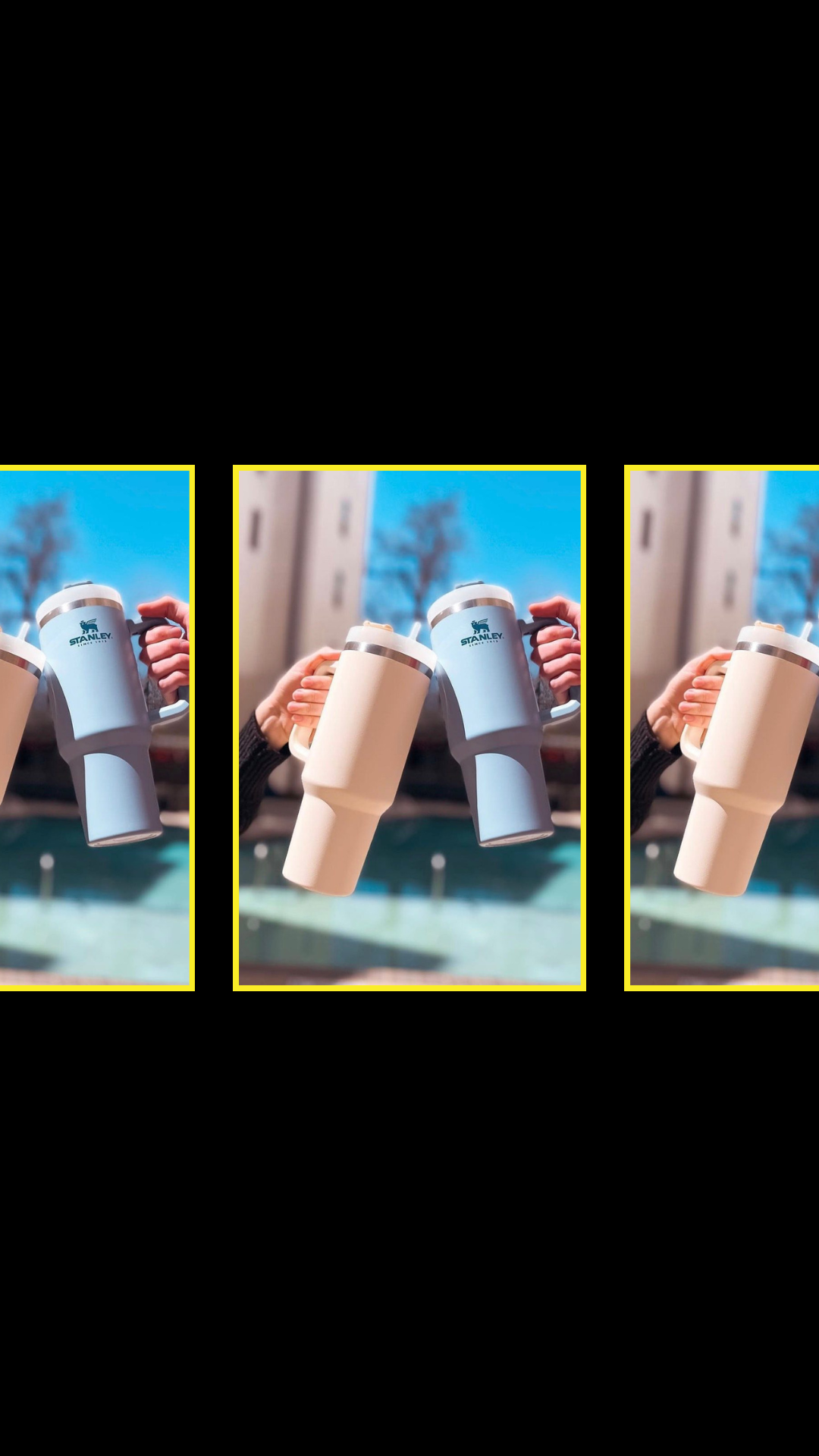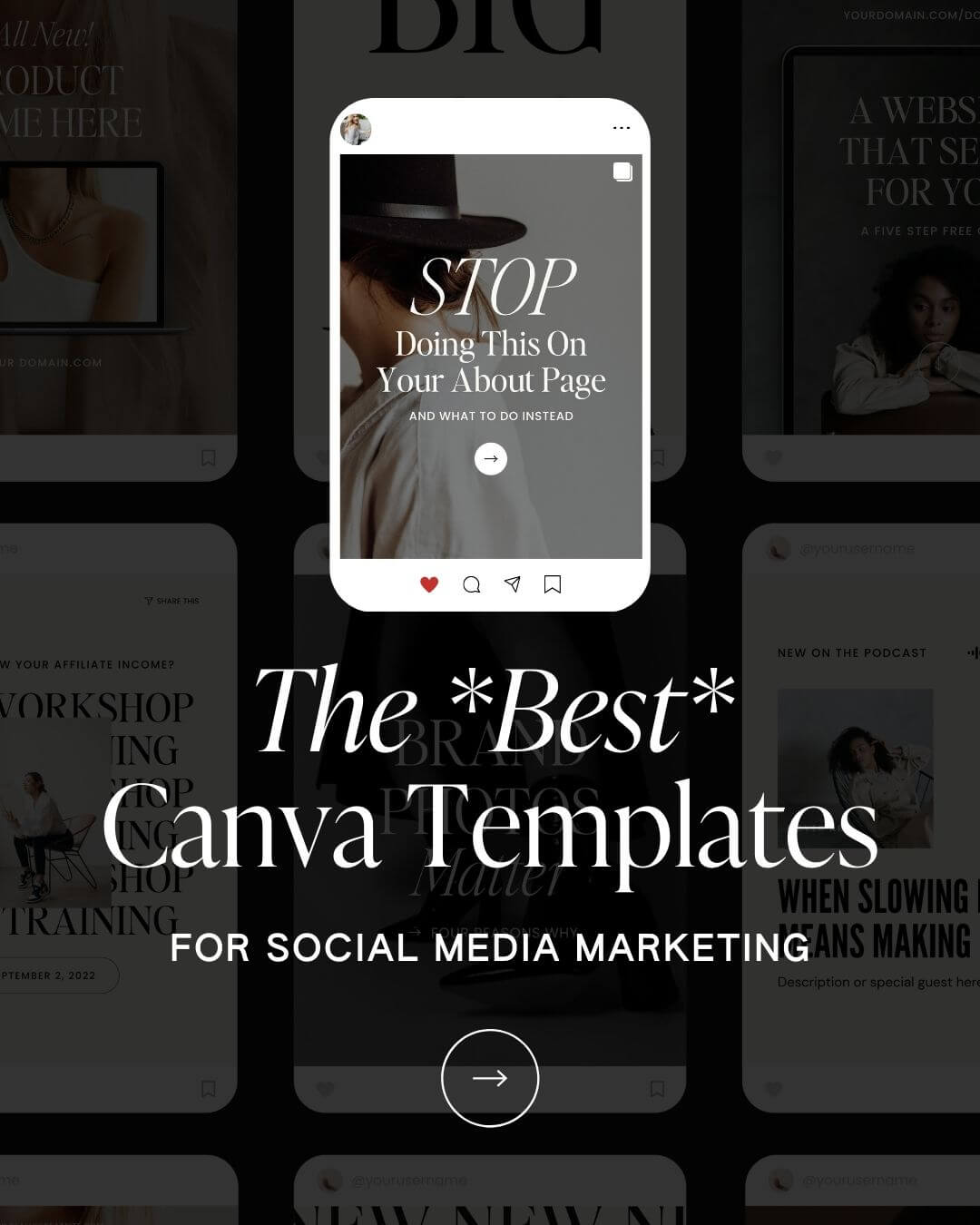Hi, I’m Jen. And I believe pretty much any situation can be turned into content.
Random sign I saw on the street? Newsletter.
Cricket in my garage? Newsletter.
Getting chewed out by a stranger over text who thought I was a scammer? Newsletter.
Running into former Etiquette teacher at an event and her asking me—at age 18—to spit my gum out into her hand? You better believe I was both dying of embarrassment and dying to tell our subscribers all about it. (That story is the perfect depiction of why I’ve chosen to officially title the TONIC newsletter #longandweird)
And today, I’m going to teach you how to do it, too.
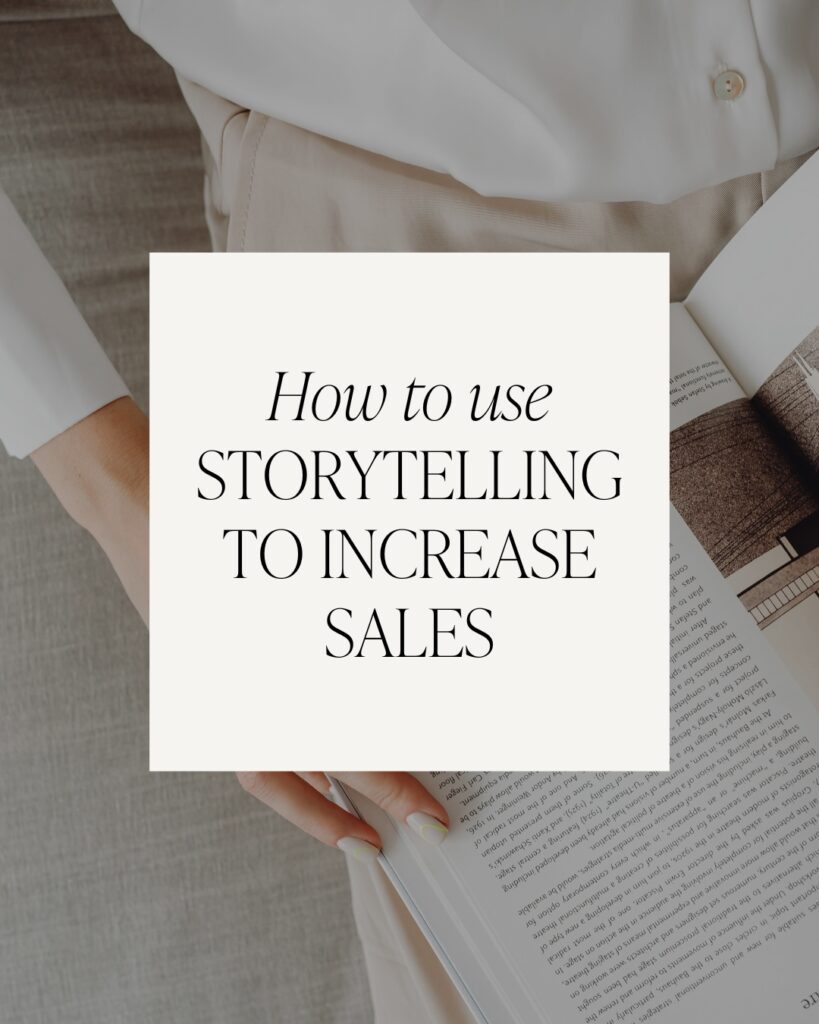
How To Use Storytelling Marketing In Your Small Business
#1 – Stop using “nothing exciting happens to me” as an excuse
You don’t need fascinating, extraordinary stories to write the memorable, story-driven content that will inspire connection (and drive insane engagement + revenue).
In fact, the most mundane, seemingly random situations can be turned into A+ marketing content for your brand.
Actually, they often make the BEST content, because—guess what?!—everyone else’s lives are pretty normal and mundane, too.
It’s much easier for someone to relate to you and connect with you over a trip to the grocery store gone wrong than a first-class flight to Dubai.
All you need to do to capture their interest is learn how to mine the so-called “boring” stuff for the engagement gold.
#2 – Learn how storytelling is used for content marketing
Mastering how to tell great stories is one of the BEST skills you can learn as a marketer, because storytelling is everywhere in marketing.
In fact, I’d even argue that storytelling is the most authentic, effective organic marketing strategy to use to get more sales.
Because, as I said, people can effortlessly resonate with stories.
In other words: stories don’t take extra effort to consume, because people like reading them. They’re entertained by them. They want to spend their free time reading about your awkward run-in with that flight attendant, or the time you excitedly waved to someone you thought was your friend, or the way your dentist responded when you told him how often you flossed.
It’s the same reason content creators have skyrocketed to celebrity-level success. People love to hear about what happens in other people’s lives.
It’s human nature to be nosy.
And it’s smart marketing to capitalize on that, in order to build real connections with your audience.
#3 – Tap into the “everything can be content” mentality
If you read my recent post about how to stop writing boring emails, you’d know this already, but that ‘everything can be content’ mentality is actually what made me fall in love with marketing again.
I’d been painfully tired of all the typical salesy, impersonal stuff, and decided to try something different—aka writing what I actually *wanted* to write about—and when my audience loved it (to my utter surprise, given how mundane it was) I knew I’d tapped into my ability to transform anything into a solid piece of content marketing.
Our Top 5 Storytelling Marketing Examples
Want to see how I transformed our audience’s “boring” stories into killer examples of effective storytelling used in everyday marketing?
After I posted what I had no idea would turn into part one of a 3-part series about content writing tips—this plea for people to stop writing boring emails—I received an overwhelming amount of DMs asking “But, Jen, HOW?! My life is BORING!” 🥴
…to which I responded: challenge accepted.
Storytelling Marketing example #1: Finger bowl
The example that started it all was this one from Jen Madigan, a virtual assistant for creatives. As soon as she tagged me in her story (see below), I knew I had to try helping her relate it back to her business.
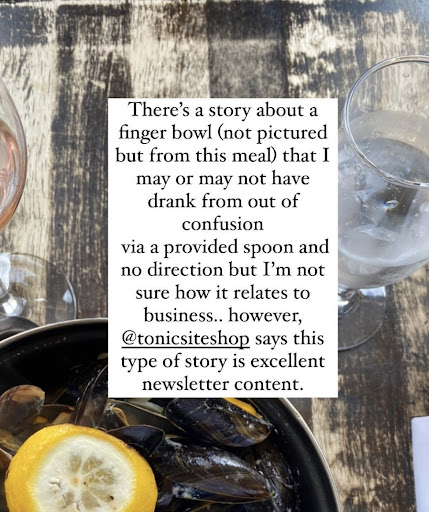
First, tell the story:
“Before Jen’s mussels came, the waiter put the finger bowl (to wash her hands) down in front of her along with a spoon (?) and said “It’s hot!” and literally nothing else (?), and it was all very confusing. So, she drank it.”
Then, relate it back to your business, by connecting the situation to a common feeling.
In this case, I chose to relate the ‘finger bowl’ to a common frustration for Jen’s clients: figuring out how to manage all of their tasks.
“I think we’ve ALL been in a situation like this in our business … where we’re faced with a piping hot “finger bowl” of a problem to solve or a complicated project to make happen with random tools and NO directions or help in sight.
That’s where I come in. I’m the friend sitting next to you saying, “Hey, I think that’s for your fingers?” I’m HERE to help you figure out the problems, the systems, the next step you need to get where you need to go… (even if that’s just to another restaurant where things make sense.)”
This is where the ‘everything is content’ mentality kicks in.
I wasn’t focused on the actual story—although it is quite embarrassing, I feel for ya, Jen—as much as I was focused on finding a common denominator between the storyteller herself and her audience.
Once you look for meaning in the story, identify an element of symbolism, and figure out a way to relate that back to your readers, you’ll transform into a storytelling expert in no time.
Let’s look at a few more examples…
Storytelling Marketing example #2: The Life-Changing Massage
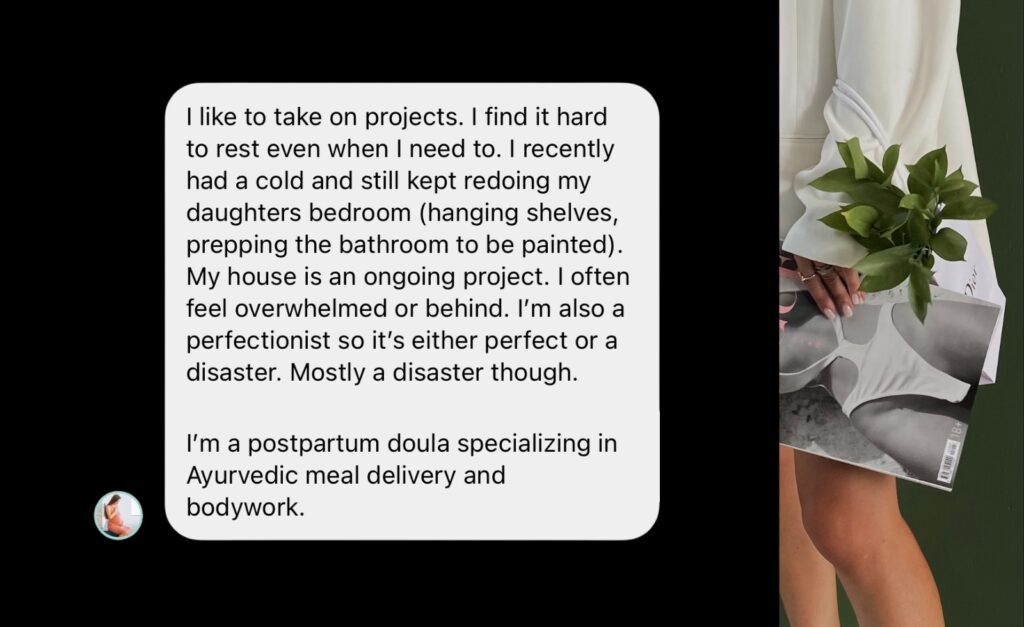
You know who else finds it hard to rest?
NEW MOTHERS. What do they need? Someone who gets that to deliver them meals and help them + their bodies rest and heal!
First, tell the story about redoing the bedroom when you had a cold. Then transition to something like this: (You could substitute the “Erin” part for anything that led you to what you do now!)
“Honestly, I’ve never been great with rest. It’s incredibly hard for me to just be still. I need to stay active — in control. But after my daughter was born, something kind of magical happened:
My friend Erin stopped by my house. She brought me a delicious, nourishing, healing meal. She washed my dishes. She made me lie on the couch — for twenty long whole freaking minutes! — while she gave me a life-changing massage.
I cried. And I knew. This was what I wanted to do. For other women like me. For women who need help, encouragement, and permission to rest.”
Storytelling Marketing example #3: Small lights, big problems.
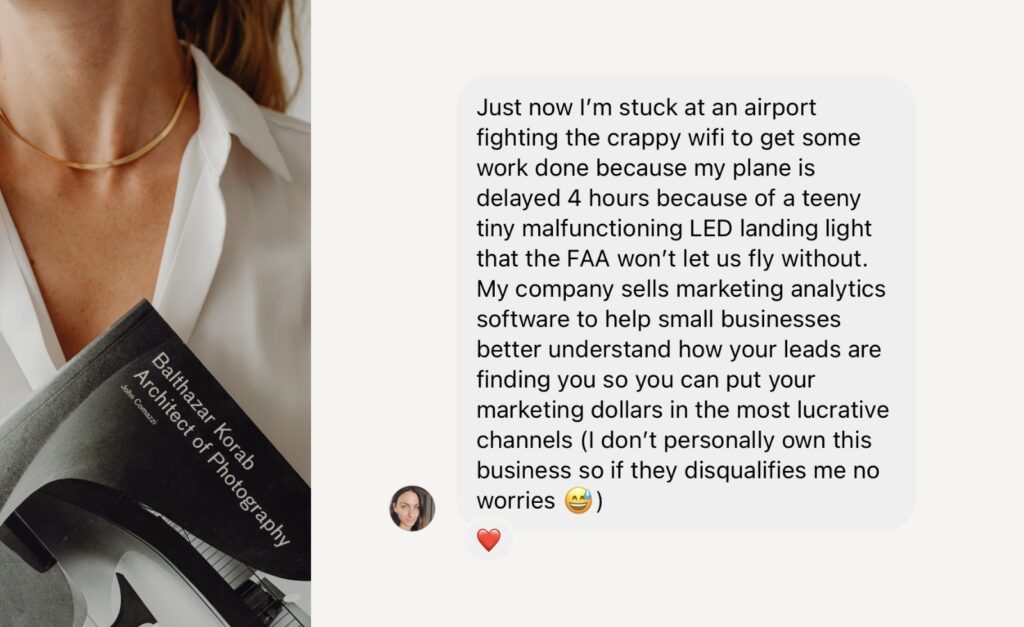
Notice anything here? Giant plane = business . Tiny LED landing light = makes all the difference in the world.
First, tell the story (here’s a short version):
“I’m writing this from the waiting area of gate 35E, where my flight has just been delayed four hours because of a LED landing light approximately the size of my pinky toe.
Yep. Hundreds of people, grounded, fighting crappy wifi because of one little light..”
You get the idea. Then transition to universal:
“I couldn’t help but think of how similar this is to business… how many entrepreneurs have absolutely NO idea what’s working for them— what’s driving the most leads, bringing in the most revenue — and how to find the teeny-tiny things flat-out malfunctioning.
Thankfully, that’s where we come in…”
Storytelling Marketing example #4: A Cat Licking An Eyeball
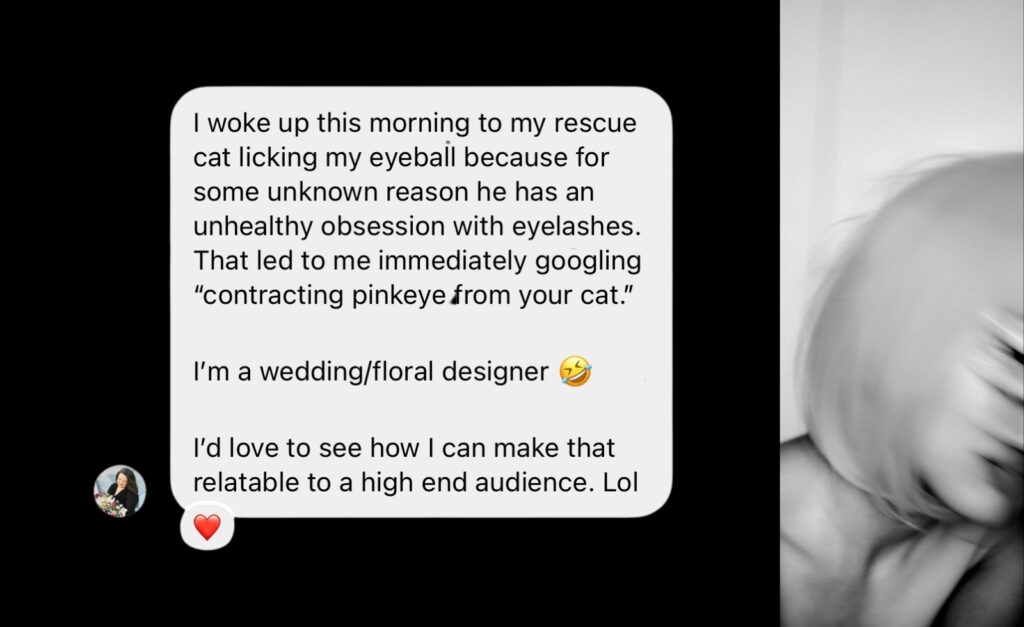
I know what you’re thinking:
“This isn’t possible. You can’t possibly turn this into an example of good storytelling in marketing.”
Oh, yes I can.
Because this isn’t a story about a cat licking an eyeball. This is a story about how we Google random things when we REALLY need expert help.
(Something we’ve all done, right? Which is your clue it’s a great, universal story!)
So, first, tell the story about the cat, then relate it back to how you can help them.
“I get asked a lot what I do… and honestly, sure, there’s a creative part of my job, but really, I’m the person who can save you from panic 1am Google-searching “Best times for wedding ceremony” and “Which side does the boutonniere go on!?” I’m the person who knows exactly when to cut the cake, the only DJ that doesn’t suck…
Heck, I’m now the person who knows you can’t get pinkeye from your cat.”
Storytelling Marketing example #5: Dancing
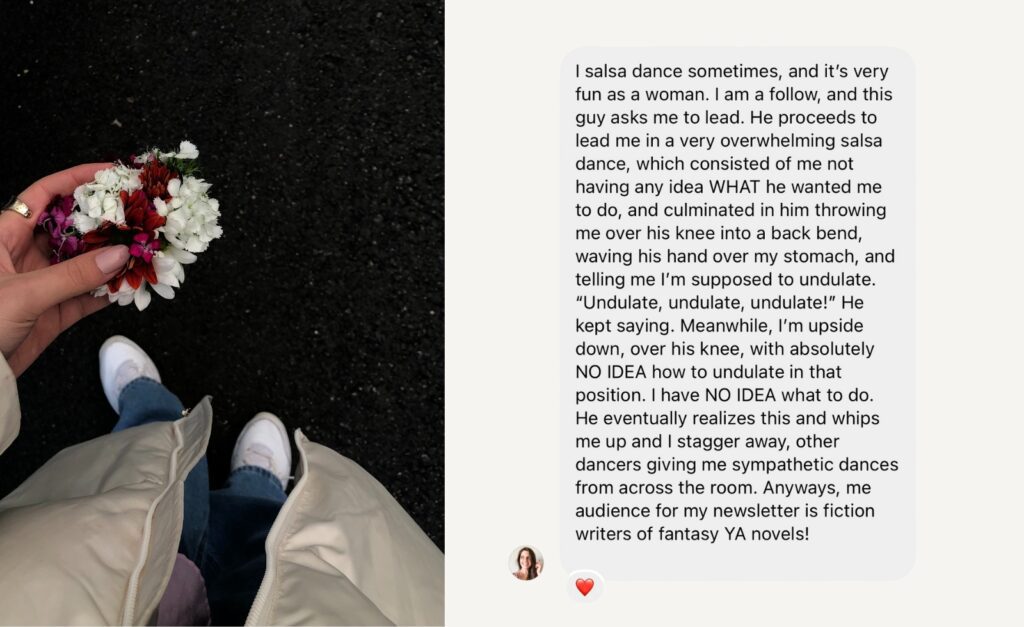
This isn’t (just a story) about dancing. It’s a story about doing something you love, and yet still having NO IDEA what the hell you’re doing.
First, tell the story, then make it universal.
“I can’t even begin to imagine how many times I’ve felt like this in my writing. Like I’ve done this before, I “should” know all the steps, and then suddenly I’m back to square one with no idea what comes next, hanging upside down while someone screams at me to UNDULATE!
Surely I’m not alone in this?
Here’s what I’ve learned to do when that happens… (you know, after Googling ‘DEFINE UNDULATE.’)”
You get the idea by now, right?
Storytelling Marketing Tips and Tricks
Here’s how you can use what you learned from these examples of storytelling in your own business:
- Ask yourself: Is there a part of your story / experience / feeling that your audience might relate to? Is it similar to something they’ve experienced, too? Take the specific and make it universal!
- Consider how this story might relate to what you do / a problem your reader has / a benefit you provide in your business / a customer case study / a new service or offer.
- After telling your story, always pivot back to your reader. Even if the story is about you, the outcome is about them. This is where you add value, provide application, expert help, or position yourself / your offer as a solution to what they need or desire.
Now, go practice and write great story content—and make sure you subscribe to our #longandweird newsletter to see all the things I transform into relevant stories to teach you more about design, marketing, and more.
Want to catch our 3-part series on writing engaging, story-driven content and my theory that almost anything can become great marketing content?
✔️ Part 1 – Stop Writing Boring Emails here
✔️ Part 2 – Boring Story Great Content
✔️ Part 3 – People Buy Stories
(And, side note, if you want to be featured in potential future blog posts like this – follow along with us on Instagram here!)

